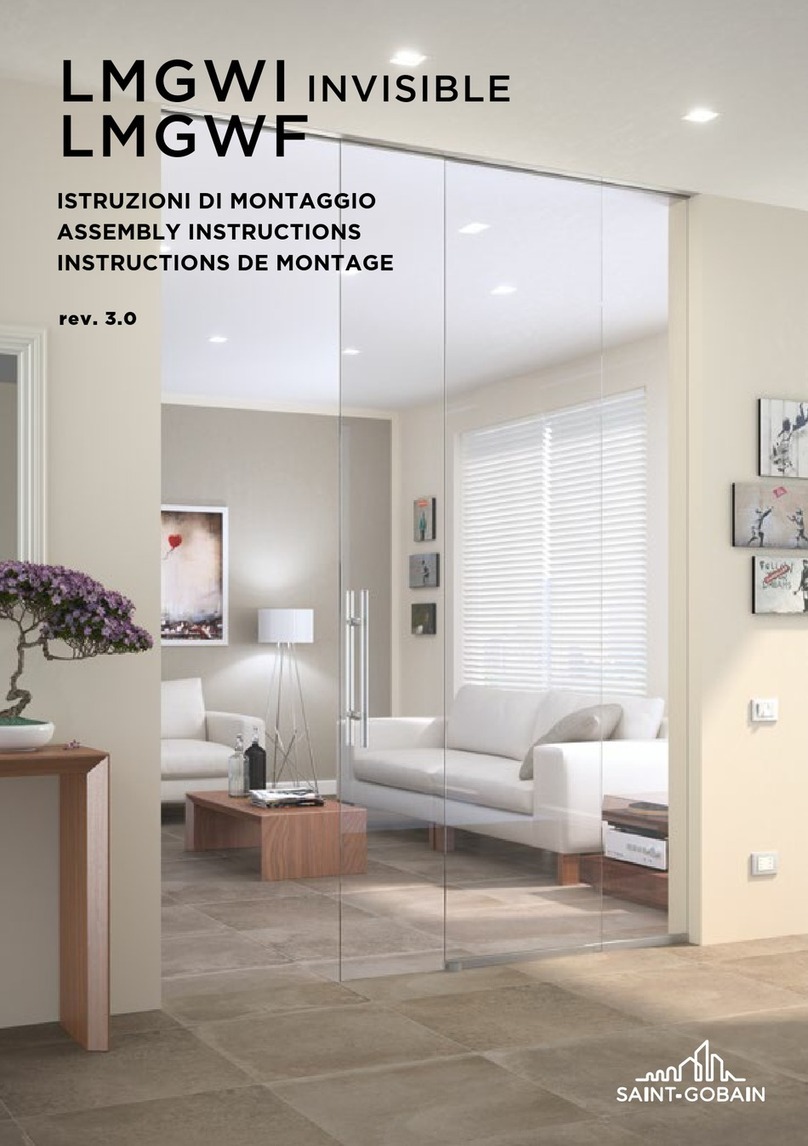
PLANILAQUE COLOR-IT PROCESSING GUIDELINES
OCTOBER 2021
4
1. General
PLANILAQUE COLOR IT is a decorative lacquered glass. It is produced by depositing a durable color
paint at the back of the glass substrate.
Product is for interior application. Contact your sales representatives for more information. For complete
performance data, please refer to the Product catalogue, our documentations and our website www.
www.saint-gobain-building-glass.pl.
To improve customer satisfaction, we constantly improve the quality of our products. This could lead to
improvement in the processability of our lacquered glasses, so please make sure you have an up-to-date
version of these guidelines.
The complete product range including thicknesses and dimensions is available on SG websites or thanks
to your local sales service.
At the time of writing, there is only the first part of the standard EN 16477-1 describing the requirements
for painted glass. Until the entry into force of the EN 16477-2 standard, the subject of which is the
assessment of compliance with the standard, painted glass is not subject to CE marking.
Defect definitions are based on EN 16477-1.
• Defects of base float glass (point and line): defects admitted according to EN 572-2; directly
influencing the distortion of the reflected image;
• Paint defects: defects directly related to the lacquer coating, e.g. scratches, spot defects,
discoloration, lack of adhesion of the lacquer to the glass:
• open spot defects of the paint: open paint blisters, holes in the paint, scratches, stains (zone
color change of the reflective paint coating),
• paint defects: defects directly related to the lacquer coating, e.g. scratches, spot defects,
discoloration, lack of adhesion of the lacquer to the glass,
• discoloration: change in the color of the paintwork which may occur after an aging test, e.g.
fading
• no adhesion: point lack of adhesion in which the paint is no longer attached to the glass
surface, detected in reflection as a shinier point.
• A cluster of point defects tis a group of not less than 3 point defects, spaced not more than
50 mm from each other on the pane.
• Linear defects: scratches, elongated spot defects, etc. on the glass surface or on the varnish,
visible from the glass side;
• Hairline scratches: very fine, circular scratches, barely visible, related to the glass washing
technique;
• Halo: optical distortion around a point defect in the float glass.
1.4.1. Definition of visible defects
1.1. PRODUCT DESCRIPTION
1.2. THICKNESS, DIMENSIONS AND TOLERANCES
1.3. CE-MARKING
1.4. QUALITY CRITERIA




























